Introduction
The ways in which individuals dress, as well as the manner in which they design the interior of their accommodations, are essential parts of people’s lives. These two spheres have a number of correlations the exposition of which may allow for a better understanding of their perceptions and desires. In this paper, the impact of the fashion on the interior design and the mutual correlation between them, as well as the influence of certain external factors on them, are exposed.
In order to do so, a literature review was carried out; it resulted in the production of a historical perspective which is reported in this paper. First, the general background of the problem is supplied, and the methods of the study are described. After the provision of the findings of the study, a discussion is offered, a number of conclusions pertaining to the issue are drawn, and certain practical recommendations related to this problem are proposed.
Background
First of all, it is of the essence to identify what fashion is. Fashion can be defined as a style of apparel, footwear, cosmetics, or other aspects of one’s appearance which dominates in a given population. It is important that fashion in many cases is a habitual tendency of the manner in which the members of a community dress.
Therefore, fashion has a significant influence on how one looks. Furthermore, it is clear that an individual will, in most cases, will attempt to look beautiful or attractive to others. Because fashion strongly influences the way people dress, it also has an impact on society’s habits and perceptions.
Thus, it is possible to conclude that fashion also affects the tastes of people. Indeed, if a certain type of clothing is in fashion, it usually means that a large number of individuals are likely to perceive such apparel as beautiful or proper. At the same time, it is interesting that fashion also plays the role of identification with the community that one belongs to; if a person is wearing garments which are out of fashion, they may be perceived as an outsider by a certain community.
Thus, it has been established that fashion has an impact on the tastes of people and on their identification with a particular community. It is no wonder, therefore, that fashion also influences other aspects of one’s life, not only their clothing. One of such aspects is the interior of people’s accommodation. Even if no direct and explicit attempt is made in order to create a match between the interior of one’s home and the dominating style of dressing, it is clear that the fashion will have at least an indirect impact on the way the accommodation is furnished and decorated, for, as we have already demonstrated, its influence on the tastes of individuals can easily be established.
In addition, it is stressed that individuals may wish to purposefully adjust or create their interior so as it corresponds to the existing fashion in order to follow the trend or to make a good impression on other people (Ching & Binggeli, 2012).
Another important aspect of the problem of interaction between the fashion and the interior design which ought to be accounted for is that in many cases, both of them are influenced by a number of external factors. It is clear that these spheres are not independent, but are, on the contrary, correlated to or dependent upon a number of conditions in which people live.
Therefore, it is possible to state that the correlation and mutual impacts between fashion and interior design can be viewed as a potential area of research. In particular, it might be useful to study the way in which fashion influences the internal appearances of people’s homes, as well as their working premises. The results of such a study might be employed in a designer’s practice in order to create interior designs which would better meet people’s expectations and correspond to their tastes. Exposing the impact of external factors on both fashion and interior design can also provide a number of useful insights for designers of both clothing and interiors.
Aims and Objectives
The aim of the current paper is to explore the domain of interaction between the fashion and the interior, primarily the interior of people’s accommodations. The objectives include discussing examples of interactions between these two spheres and the influences of the third factors on them in order to create the picture of and provide insights into the mutual effects of these two spheres.
Methods
The current paper is a report of secondary research which was carried out by conducting a literature review. The reviewed materials included a number of articles from the book edited by Fisher, Lara-Betancourt, Keeble, and Martin (2011), as well as some other books and certain Internet resources. In order to find the materials, a number of searches employing the search engine of Google, as well as the university library’s resources, were conducted; the keywords “fashion”, “interior”, and “design” were utilised in the process. Retrieved sources were analysed, and a historical perspective on the issue was created.
Findings
History
In order to more comprehensively understand the ways in which fashion has an influence on the design of the internal appearance of people’s accommodations and other types of premises, it is important to have a look at how such an impact took place in the history. For this purpose, a number of historical settings will be considered, and the phenomena which influenced both the clothing habits of people and their interior preferences, as well as the effects of fashion and certain other factors on the internal appearance of accommodations, will be examined.
18th-century France
One of the settings where the impact of the fashion on the interior can be discussed in France of the18th century. According to Koda and Bolton (2006), one of the key aspects of the social behaviour that was characteristic of the elites of that time and place was that the body was utilized as a tool for obtaining pleasure and that the process of communication and interaction between individuals was very often viewed (consciously or unconsciously) as a process of seduction.
It should be stressed that seduction, in this case, is understood not only as an activity which leads to a sexual experience but also as a process of interaction which involves a number of various postures, expressions, and conversations which may lead to obtaining satisfaction via visual and/or verbal stimuli. It is also interesting that the process of mutual pleasing was in most cases carried out as a part of completely natural communication; the seducing component was rather often not covert (Koda & Bolton, 2006).
The quest for pleasure is stated to have been a governing point of almost every aspect of the behaviour of individuals belonging to the social elites of 18th-century France (Koda & Bolton, 2006). It is clear, therefore, that the way people dressed also played an important role in this process. It rather often happened that women’s dresses and garments exposed some parts of their bodies, including shoulders and the upper part of their chest.
In some cases, even the breasts could have been seen to others. It is quite typical that the exposition of breasts was done in a manner which seemed somewhat unintentional, but, in spite of this, it is clear that the intention was present. A number of pictures of French women of that period can be seen in Appendix 1.
It is a fact that a female body was in many cases viewed as a sexual object, whereas the male body was not objectified so much; it is also a common situation nowadays. In the 18th century France, this was the case as well; the garments which were worn by women were much more exposed than the apparel for males. Men, on the other hand, had to satisfy both the need to dress according to the latest fashion and to preserve their masculine attractiveness.
It is no wonder, therefore, that even though men did not “show off” their bodies, they did utilize various “tricks” which allowed them to look more attractive and handsome. For instance, it was not uncommon for French males to use padding or corsets in order to look more masculine (Koda & Bolton, 2006).
As it can be seen, the apparel that the representatives of both sexes wore in the 18th-century France was designed in a way which permitted them to comply with the implied need and the social habit of flirtation as an integral part of the interaction process. It is clear that this general manner of interaction also had an influence on the internal design of people’s accommodations. While the general mood of the design resulted from this social habit, the style in which the interior was designed had more connections to the aesthetical perceptions, which were also significantly influenced by the trends in the fashion.
For instance, the first picture in Appendix 1 shows two couples participating in a flirtatious conversation at the dining table. One female pours wine for a man who appears to be rather eager, whereas the other woman is reading a piece of paper in a way which does not allow the other male to see what is written on it, clearly engaging in some type of a sexual play. The furniture in the room also supports the atmosphere of the flirt.
For instance, the picture which can be seen above the door shows a number of small naked chubby boys, one of whom is holding a bow; it is apparent that this boy is supposed to be Cupid, the god of erotic love and sexual desire. The candles on the walls also add to the erotic atmosphere of the party. Near the dining table, a number of small tables can be seen; these tables can easily be moved, and they allow for easy access to napkins and bottles of wine at the party (Koda & Bolton, 2006).
The second picture from Appendix 2 shows a room imitating the 18th-century style. It is possible to see a posh sofa and a chair, both in the same style. A number of tables which can be moved around are also present in the room; as in the previous example, this allows for easily adjusting the furniture for the purpose of having a party. The style in which the chair and the sofa are done, interestingly enough, resembles that of the man’s jacket; the patterns are quite similar.
Therefore, it can be concluded that in the 18th-century France, the logic of the fashion was dictated by the social peculiarity according to which the flirtation carried out during a casual conversation and the pleasure derived from it were integral parts of virtually any social interaction, especially in the behaviour of the elites of the society. The same logic dictated the manner in which the interior of people’s accommodations was designed. Because the fashion had an influence on the tastes of individuals and their perceptions of beauty, it is clear that they would tend to view the same patterns and combinations of colours as beautiful; therefore, the style of furnishing had a number of parallels to the apparel that people used to wear.
The USA in the 1930s
The fashion in the 1930s in the USA was significantly influenced by the political and social situation in the country. The Wall Street crash in 1929 affected virtually everyone, and, while prior to this period a certain proportion of people often used to wear custom-made clothes, after the Crash most individuals started preferring factory-made apparel because of its lower cost. Females also often attempted to look sophisticated and wore garments of muted colours, as well as clothes which were adorned with floral or geometric patterns. The clothing, however, became significantly more modest than before (“1930s Fashion,” n.d.).
Somewhat later, women switched to more practical clothes. The apparel of men was also influenced by the Great Depression; males switched to factory-made clothes as well. For men, it became a fashion to highlight (or create the impression of) the athletic figure, for which aim such pieces of clothing as shoulder pads were utilized. However, the clothes of men also became more practical.
It is important to stress that, in spite of the fact that the crisis had a significant negative impact on the financial capabilities of the population, people still attempted to look well. In many cases, women purchased textile and made clothes on their own, as well as modified the pieces of wear that they already had (Fisher et al., 2011, p. 125). In fact, the clothes remodelling became a serious trend in the American society; many females learned to reconstruct and remake their apparel so as to comply with the desire to look better in spite of the financial trouble (Fisher et al., 2011).
The same trend took place in interior designing. It became rather popular to carry out a reconditioning of home furniture. Bulletins were published in order to help the citizens of the U.S. to learn to reconstruct their furniture. These bulletins offered practical advice pertaining to the process of selection of pieces of furniture which were capable of being effectively reconstructed.
It is interesting to note that these bulletins utilized diagrams which illustrated “the process of producing specific types of knots or stitching strategies for tying new springs into place”, and the authors of these bulletins “relied on women’s familiarity with reading sewing patterns to read the sectional line drawings of chair components” (Fisher et al., 2011, p. 127). An illustration from such a brochure can be seen in the picture in Appendix 3. A number of pieces of furniture reconstructed in this way by Americans can be viewed in Appendix 4.
It is interesting, therefore, that the economic crisis had a similar effect on both the domains of fashion and of interior design and that Americans created new ways so as to deal with the problems pertaining to both of these domains in a similar manner. It is paramount to stress that, due to the fact that women used roughly the same techniques so as to remodel both the furniture in their room and their clothes, the internal appearance of their accommodation and the look of their apparel gained a certain degree of resemblance.
In addition, it should be pointed out that the tendency to compose objects in space into groups which had similar functions or an aesthetic relationship led to the observed enlargement of internal space of the American households. It is also noted that the crisis, in fact, allowed for the development of certain creativity among the American population, the one which cannot have been observed in the pure acts of consumption such as the purchase of apparel in a shop and its further utilization without any adjustments, which had been a common practice prior to the times of the economic crisis (Fisher et al., 2011).
The Interaction Between the Fashion and the Interior Design Nowadays
Nowadays, both the worlds of fashion and of the interior design are significantly influenced by the globalisation. New fashions are created by a number of prominent public figures, and these fashions tend to spread around the globe; sometimes they become popular rather distinctly, but in some cases, they spread in a rather covert way that might not be noticed unless it is purposely looked for.
It is possible to discuss the influence of key designers on contemporary fashion. For instance, it is stated that Giorgio Armani had a major impact on the dressing habits of the world. The keystones of many of his collections of clothing were the “combination of comfort and sophistication, functionality and elegance”; the designer stressed that “if people feel relaxed, they also feel secure” (as cited in Fisher et al., 2011, p. 236).
Some examples of Armani’s works can be seen in Appendix 5. Being a globally recognised fashion designer, Armani influenced fashion preferences in numerous countries and regions. The fact of comfortable and functional clothes being in fashion also resulted in the popularity of the interiors the focus of which is the maximisation of comfort and convenience for a person; these are combined with the elegance and the lack of excessive pomposity.
Another factor which has a considerable effect on both the fashion and the interior designing is the influence of the virtual creations which are made possible by the new technology. In particular, the television has a significant impact on the tastes of a large number of people. In fact, a considerable part of the population watch the TV on a daily basis; it is emphasized that “some screen environments have become almost virtual extensions of our living space – rooms that we visit with almost as much frequency as some in our homes” (Fisher et al., 2011, p. 243).
It is also paramount to stress that, in contrast to the situations which “naturally” occur in the real world, the settings and apparels that are demonstrated on the television (and not only on the TV but also in other forms of virtual settings) are the product of the activity of the production designer who is responsible for the creation of this or that piece of the virtual environment. Importantly, these designers draw the models according to which they create their works from a number of different sources and disciplines. It should be noted that the images made by the authors of virtual pieces often become the models both for particular individuals and for certain trends. People may attempt to imitate these models both by wearing some types of apparel and by including some elements of the virtual environments in their interiors.
Some other aspects which have a profound influence on both the fashion and the interior design are the concepts of consumption and image, which are strongly characteristic of the contemporary society. The modern world is dynamic, so the architecture and the interior also tend to follow this trend; for instance, installations and stage sets have gained significant popularity nowadays. These tendencies result in a new concept of space, in which not only outdoor but also indoor spaces become means of presenting images that view people primarily as customers and urge them to engage in consuming activities (Fisher et al., 2011, p. 258).
Thus, today’s public interiors quite often become places where products are advertised and consumption is stimulated. The same happens with fashion; it is completely common nowadays to wear garments which have the brand images of different companies on them. Thus, the everyday fashion itself becomes a medium for the stimulation of consumerism.
It is also worth emphasizing that numerous channels of information such as the social media also have a considerable impact on the pace and manner at which new fashions are spread (“How Does the World of Fashion Influence the World of Interiors?,” 2013).
It is stated that, whereas during a certain period in the past the world of interior design was mostly adopting the new trends from the world of fashion, nowadays both spheres tend to collaborate in order to produce new tendencies in both fashion and interior designing. It is important that today’s designers are capable of viewing the preferences of consumers by utilising such means as the social networks. This allows them to see what types of apparel and which kinds of interiors are the most attractive for the users of the social networks. These designers are then able to adjust their production to the perceived preferences of the customers (“How Does the World of Fashion Influence the World of Interiors?,” 2013).
In addition, it should be stressed that these days, in spite of the fact that people are viewed primarily as consumers by corporate organisations which dominate in the media and the public space, individuals, thanks to the newest technologies, are also able to have an influence on fashion and trends in interior design. In particular, it is stated that some time ago, the creation of interiors was primarily the sphere of activity of interior designers, whereas nowadays people tend to actively participate in the process of the adjustment of their living space.
For instance, it is highlighted that not long ago, there was a trend to use the beige colours much in the interior designing. However, today people seem to tend to pay more attention to the current fashion in clothes and attempt to incorporate the elements of this fashion into the design of their accommodation; this results in the use of a wide range of colours in the interior (“How Does the World of Fashion Influence the World of Interiors?,” 2013).
Therefore, it should be concluded that in today’s globalised world, the emphasis in both fashion and interior design is rather often made on utility, comfort, functionality, and convenience. People that are at least partially responsible for the popularity of these concepts are the world-known fashion designers such as Armani. The concepts, having become popular in clothing, then transferred to the realm of the interior design. However, it is also paramount that both of these spheres have, in fact, become some of the media which translate the messages urging people to participate in the activities of consumption; the commercialisation touched upon numerous aspects of an individual’s life, including their clothing and their personal space, even at home.
Discussion
Therefore, the literature review has shown a correlation and strong mutual influences between the spheres of fashion and interior design. Moreover, it has been demonstrated that numerous other factors have an impact on both the dressing habits of people and the way they design their interiors. For instance, in the 18th-century France, the ubiquitous presence of flirtation had a considerable influence on the way in which people dressed; this also dictated the interior of their accommodations to a certain extent. The trends in fashion had an impact on the tastes of people, thus influencing their perceptions on what types of interiors should be created.
On the other hand, the deep economic crisis which the U.S. was faced with in the 1930s also had an effect on the ways people dressed; being unable to purchase apparel from designers, individuals started giving preference to factory-made clothing, and often redesigned the old garments they had. The practice of redesigning led to changes in the ways of interior formation of an American household; American women, using the knowledge gained from working on clothes, became skilled in redesigning furniture as well, using their new skills in order to modify and transform the pieces of furniture; using the same skills led to a resemblance between the clothing and the furnishing.
Finally, in the modern world, people tend to prefer the types of apparel of which functionality and comfort are typical; this trend may partially be explained by the activity of a number of famous clothing designers such as Armani. It was also noted that nowadays individuals often tend to participate in the designing of their interiors more than they did a number of years ago; people often attempt to use many colours in order to make their interiors somewhat similar to their general style of clothing.
In addition, it is interesting that many aspects of the contemporary society have a considerable impact not only on the way people dress but also on the manner in which they organise the interiors both of their homes and of the public space. For instance, the commercial intrusion into numerous spheres of life can be stated to be characteristic of the contemporary world.
In the sphere of fashion, it results in the use of apparel as one of the mediums for the advertising images and messages; the same occurs in both the internal and external public space, which is actively used in order to promote products and services which are to be consumed by the public. In addition, the virtual sphere (the contents of which are created by a production designer) also has a significant impact on the preferences of people, translating images of apparel, interiors and lifestyles which are seen by people on the regular basis, and which, thus, influence their tastes.
Therefore, it might be possible to state that the objectives of the current paper have been achieved. A number of examples of interactions between the domains of fashion and interior design have been provided, and certain aspects of the impact of some external factors on them have been exposed. This allowed for the creation of a general image of the given problem, as well as for the demonstration of some aspects of the interaction between fashion and interior design.
The current investigation can be criticised from a number of points of view. For instance, the used choice of examples from history was made according to the personal interests and preferences of the author. This might have led to the creation of a picture which is less comprehensive than one that could have been obtained if the choice was theory-driven. On the other hand, it should also be observed that a theory-driven exploration often serves to confirm or deny an existing view or hypothesis, whereas choosing a random sample may have a greater chance to allow for a discovery of an unexpected element.
Conclusion and Recommendations
Thus, it should be stressed that there exist a number of correlations and mutual influences between the fashion which dominates in the current society, on the one hand, and the way in which people design their interiors, on the other. It has been found out that the current fashion has an effect on the people’s tastes and perceptions, and that individuals often may try to adjust the interior of their accommodations in accordance with the current fashion in clothing. It has also been shown that the general manner of interaction, as well as the economic aspects of the social life, also have an impact on the fashion and design. In addition, some factors which exist nowadays and have an influence on the people’s choices and tastes also have been exposed.
It is possible to provide a number of recommendations pertaining to the professional activities of both fashion and interior designers based on the current paper. First, such designers should pay attention to the social habits and trends which are characteristic of a particular community when designing apparel or interiors. Second, the impact of the new technologies and the media on the public needs to be taken into account. Designers may also find it useful to utilise the newest tools such as the social networks in order to both research the tastes of individuals and to shape them to a certain extent. The correlation between the clothing and interior preferences should also be taken into account.
Appendix 1
Three pictures of 18th century French women in dresses which expose their breasts (“The Naughty Side of 18th Century French Fashions,” 2012):
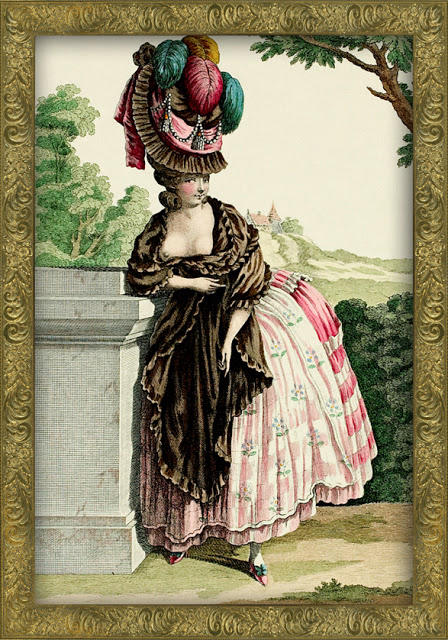
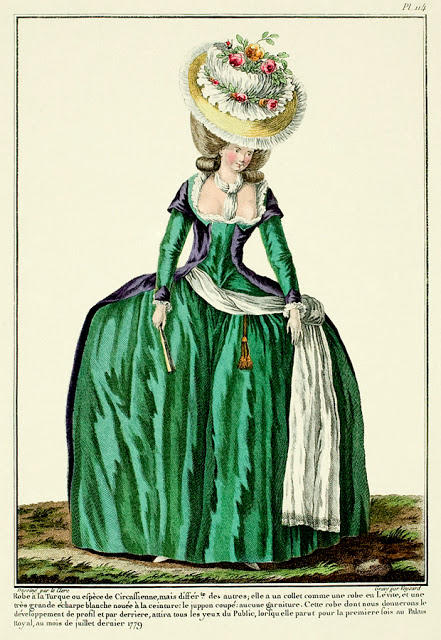
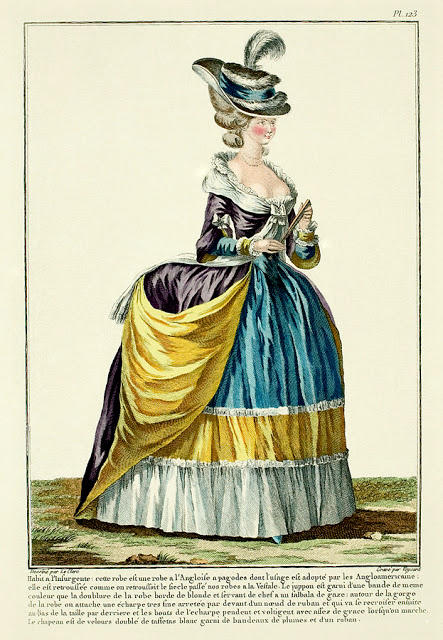
Appendix 2
Two examples of 18th-century French interiors (Koda & Bolton, 2006).
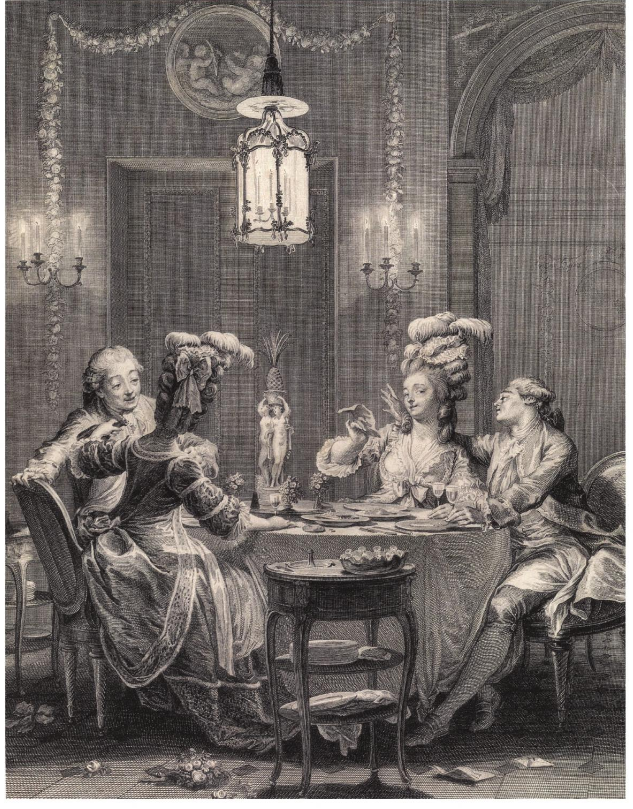
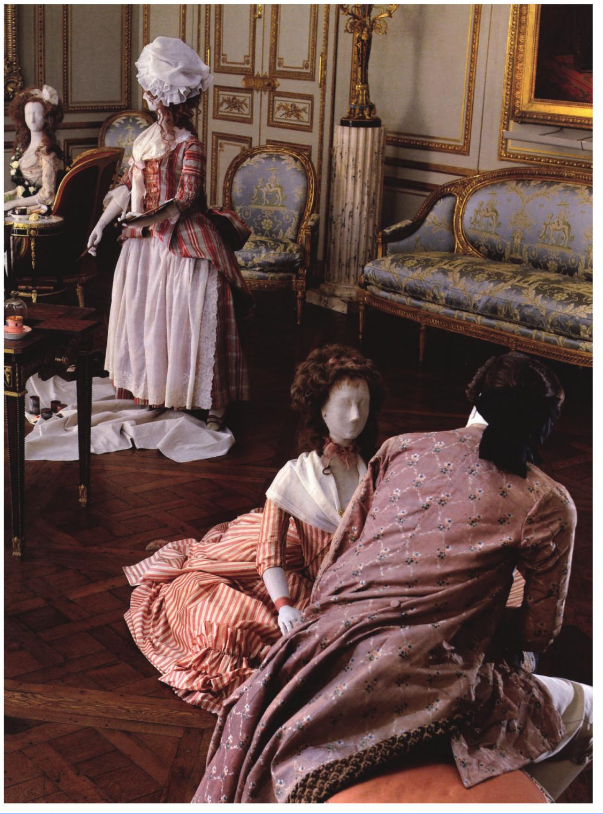
Appendix 3
The instructions for reconstructing the furniture resembled the instructions for clothes remodelling (Fisher et al., 2011, p. 129).
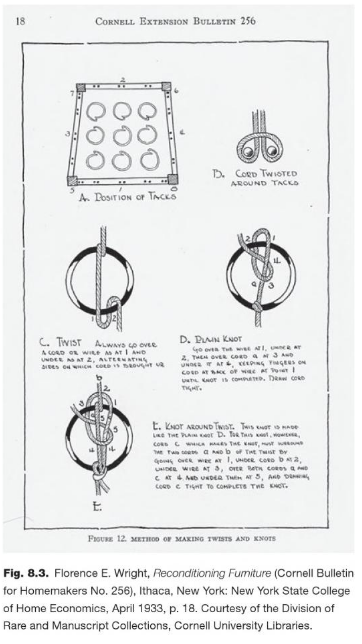
Appendix 4
A number of photographs of reconstructed furniture can be seen in the picture (Fisher et al., 2011, p. 129).
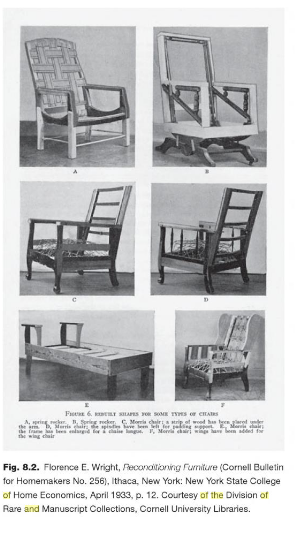
Appendix 5
Some garments designed by Armani (Fisher et al., 2011, p. 236).
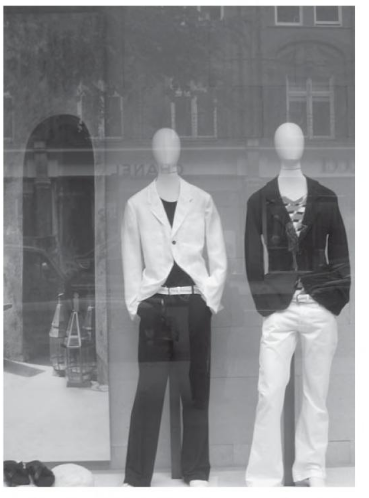
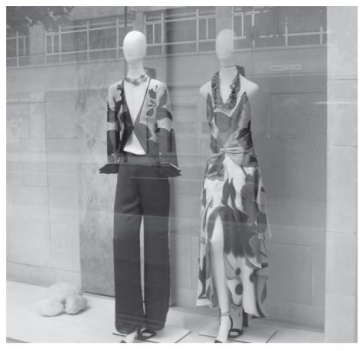
References
1930s fashion for women. (n.d.). Web.
Ching, F. D. K., & Binggeli, C. (2012). Interior design illustrated (3rd ed.). Hoboken, NJ: John Wiley & Sons.
Fisher, F., Lara-Betancourt, P., Keeble, T., & Martin, B. (Eds.). (2011). Performance, fashion and the modern interior: From the Victorians to today. London, UK: Berg.
How does the world of fashion influence the world of interiors? (2013). Web.
Koda, H., & Bolton, A. (2006). Dangerous liaisons: Fashion and furniture in the eighteenth century. New Haven, CT: Yale University Press.
The naughty side of 18th century French fashions. (2012). Web.